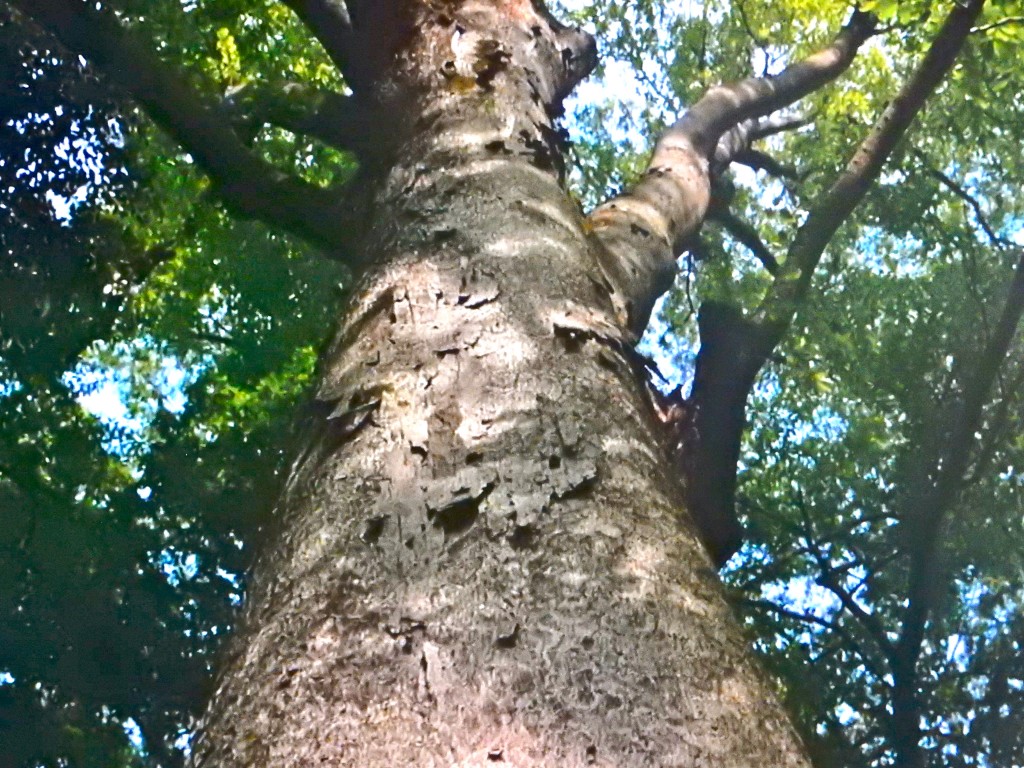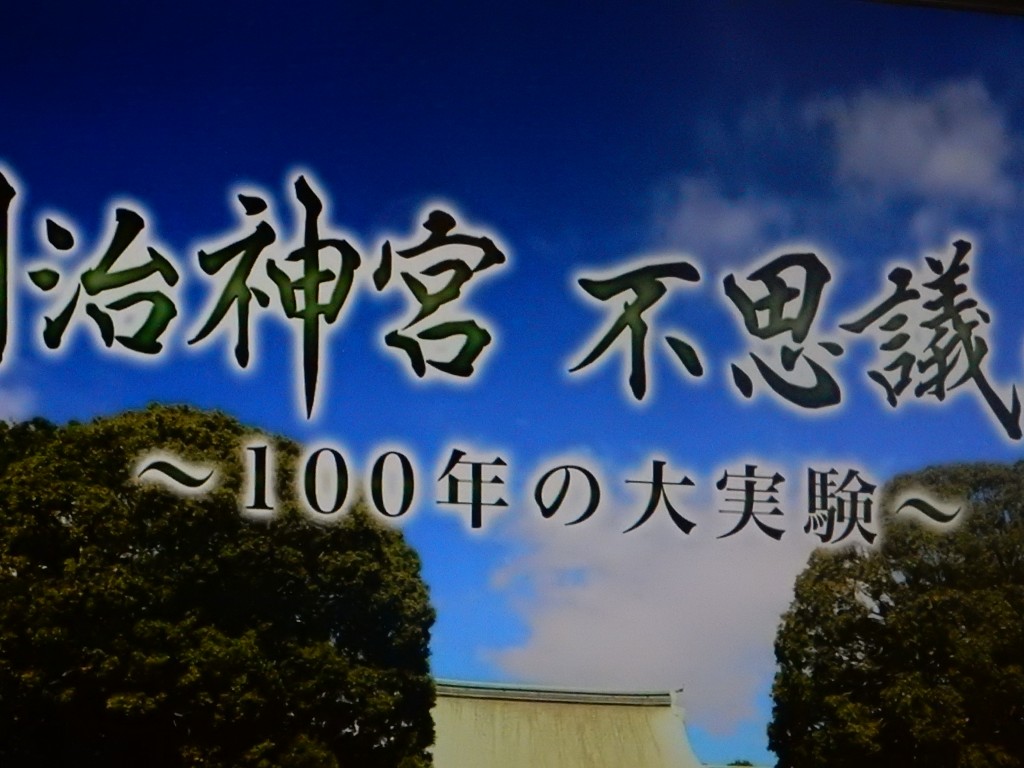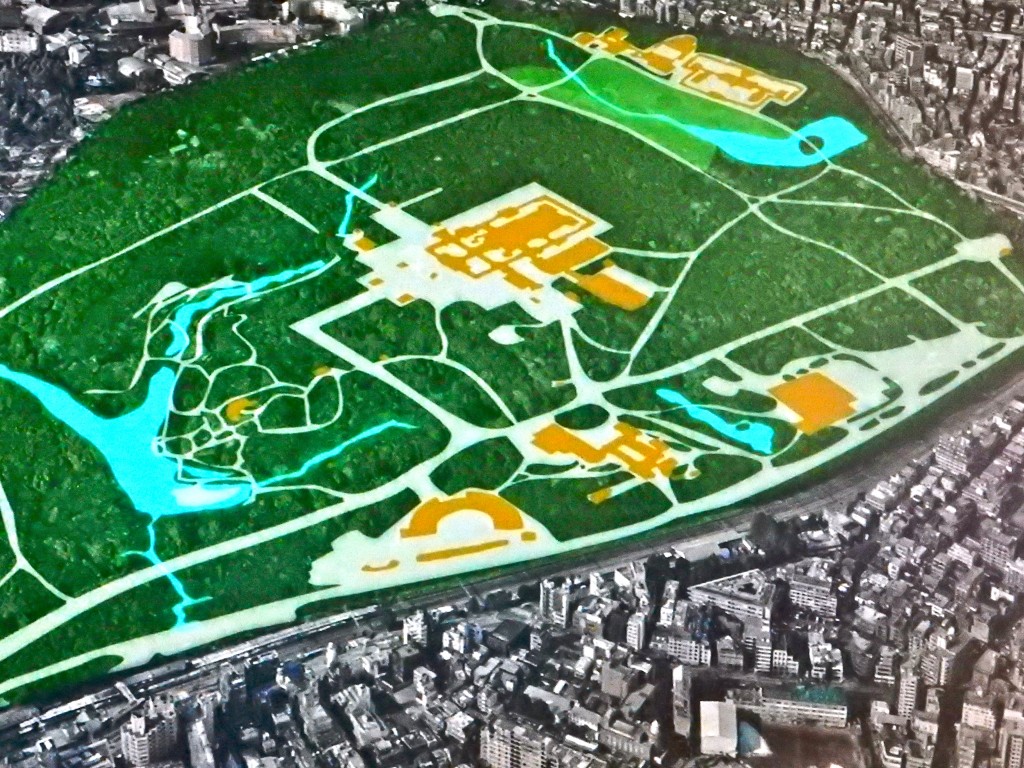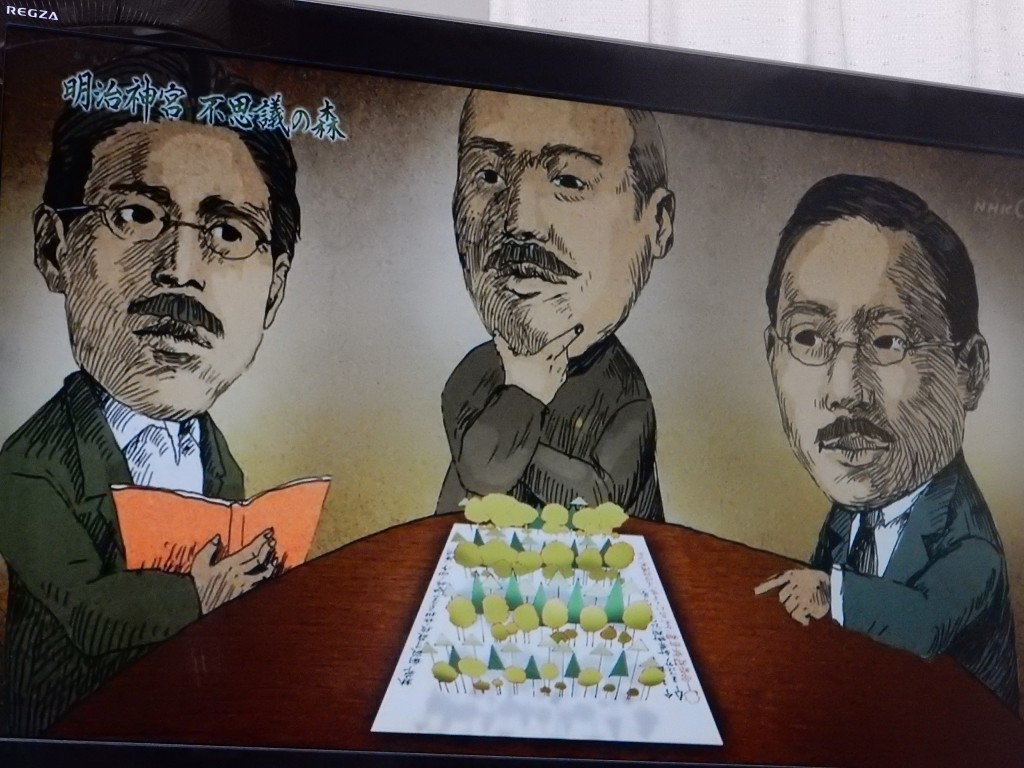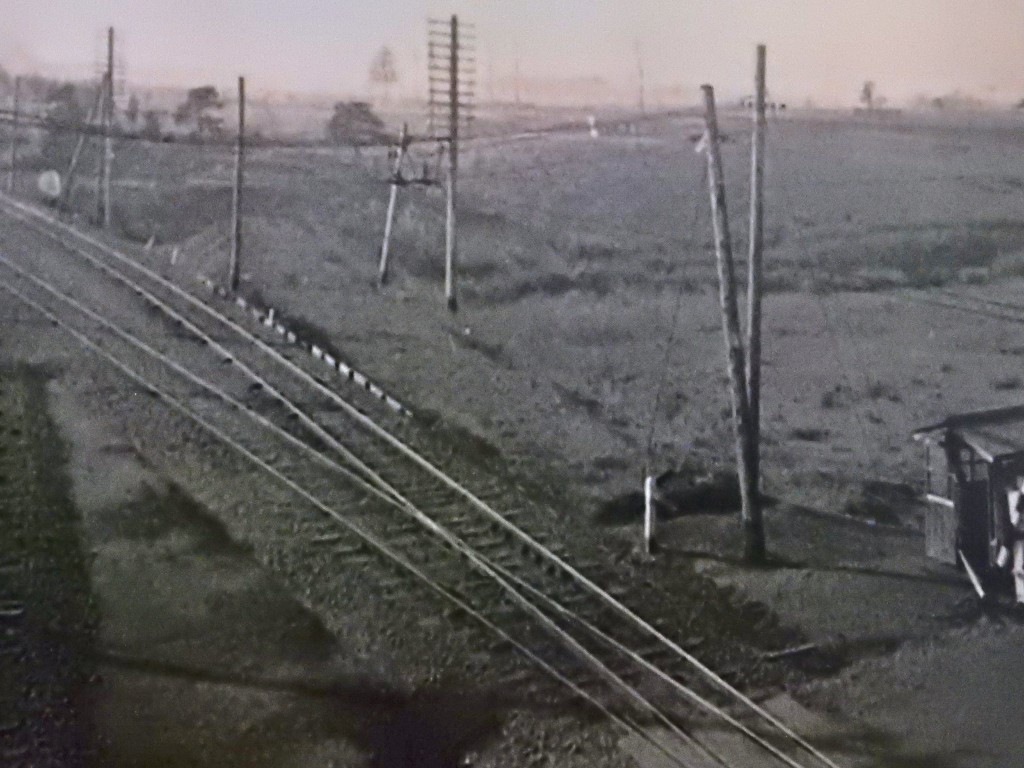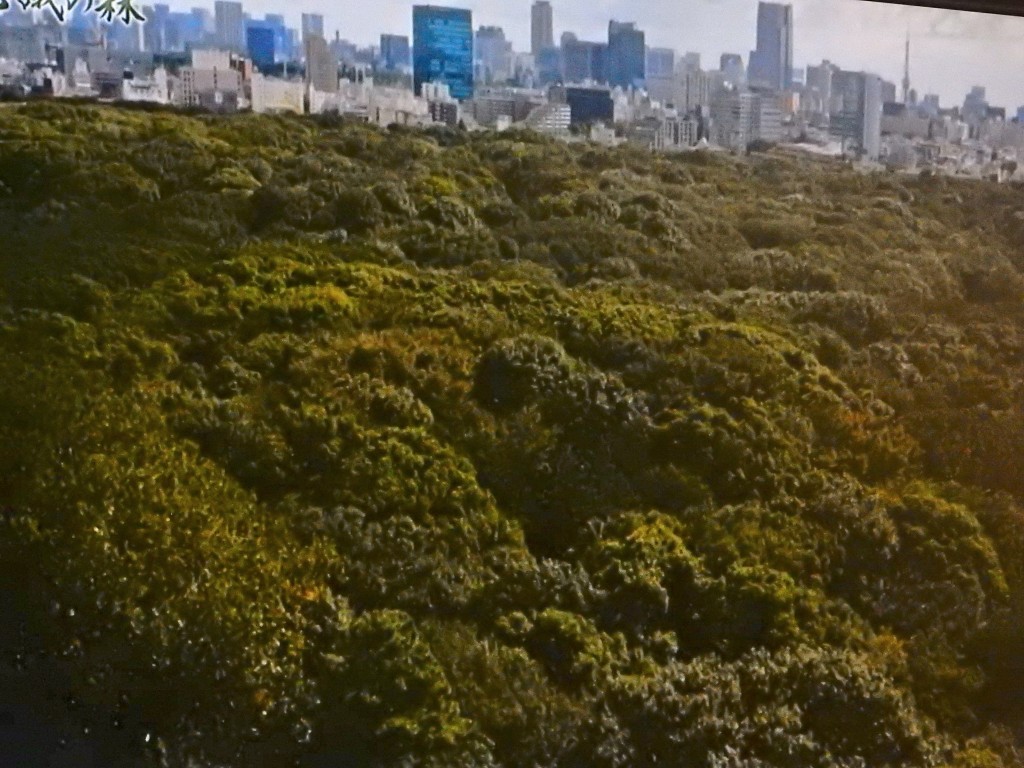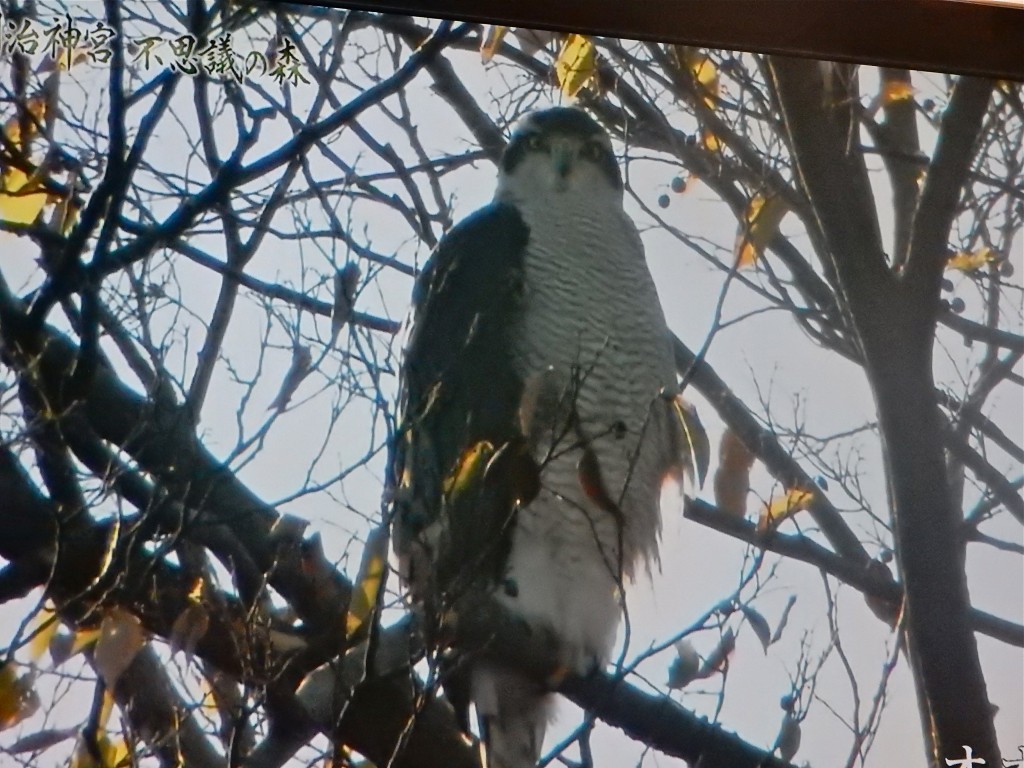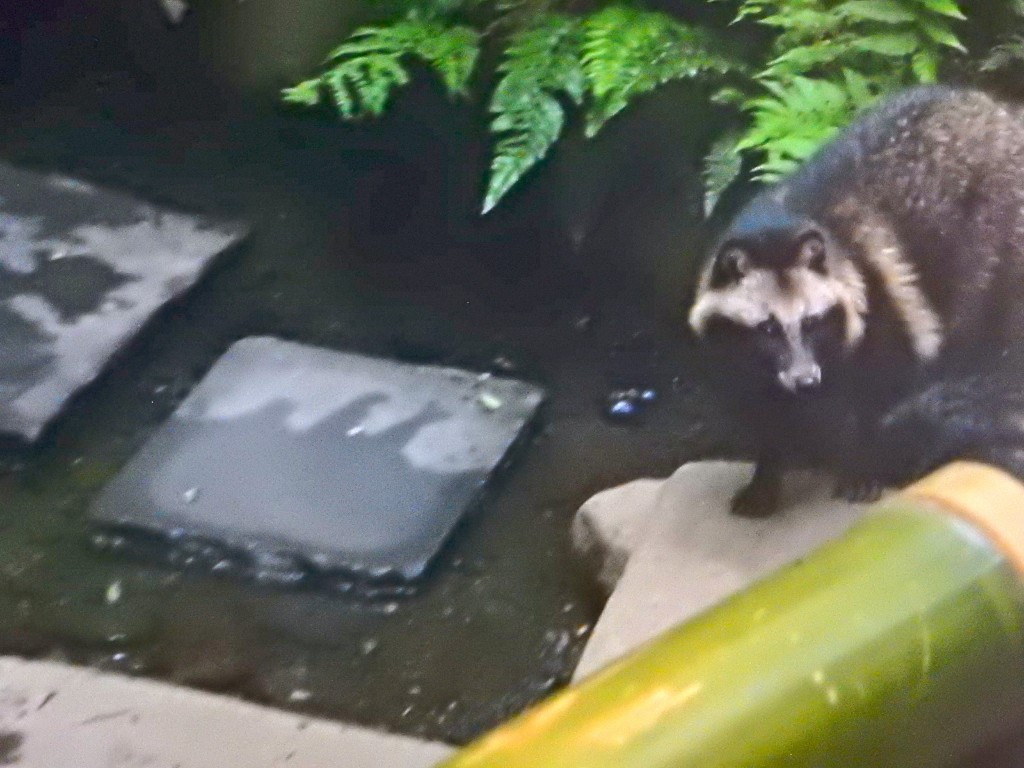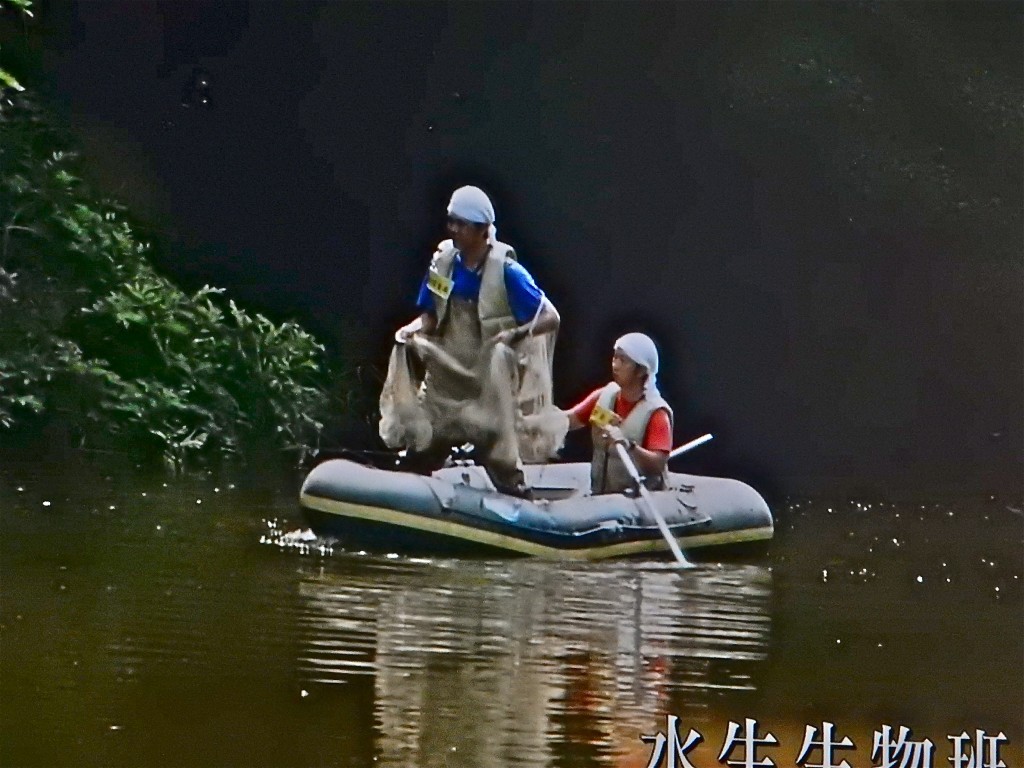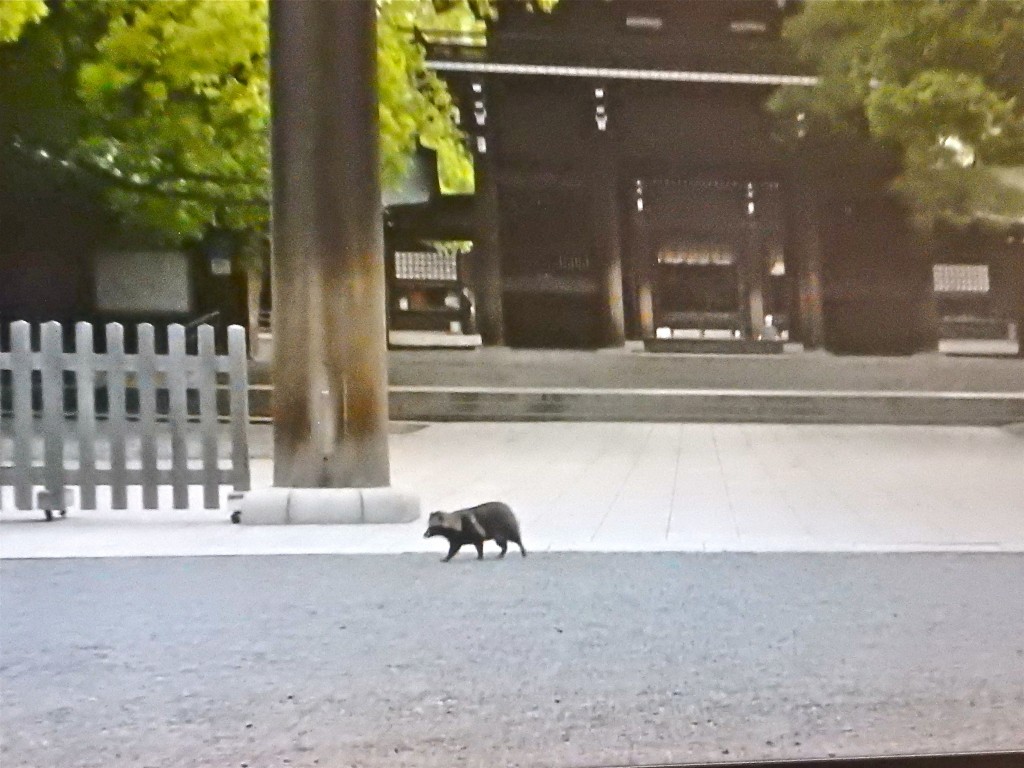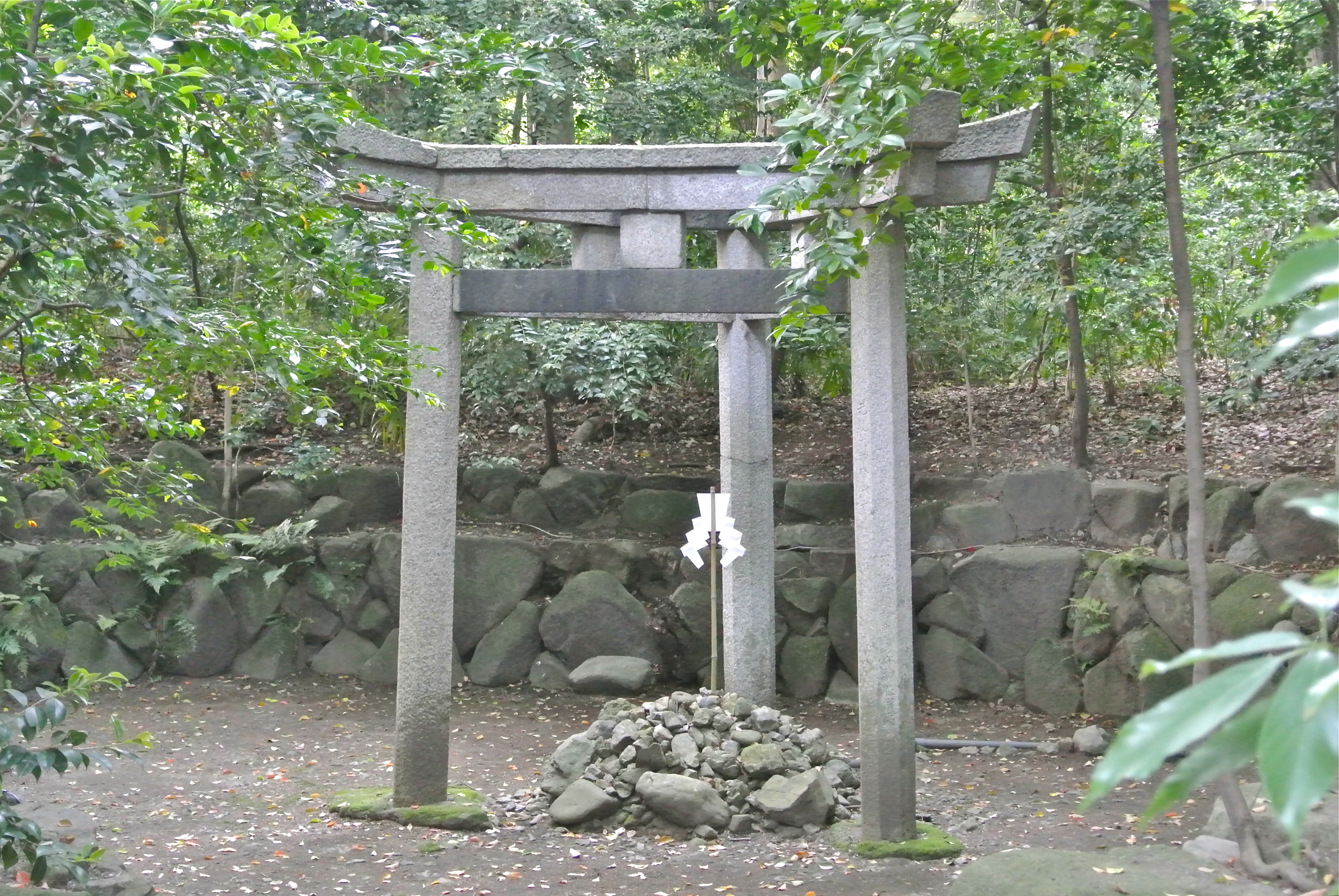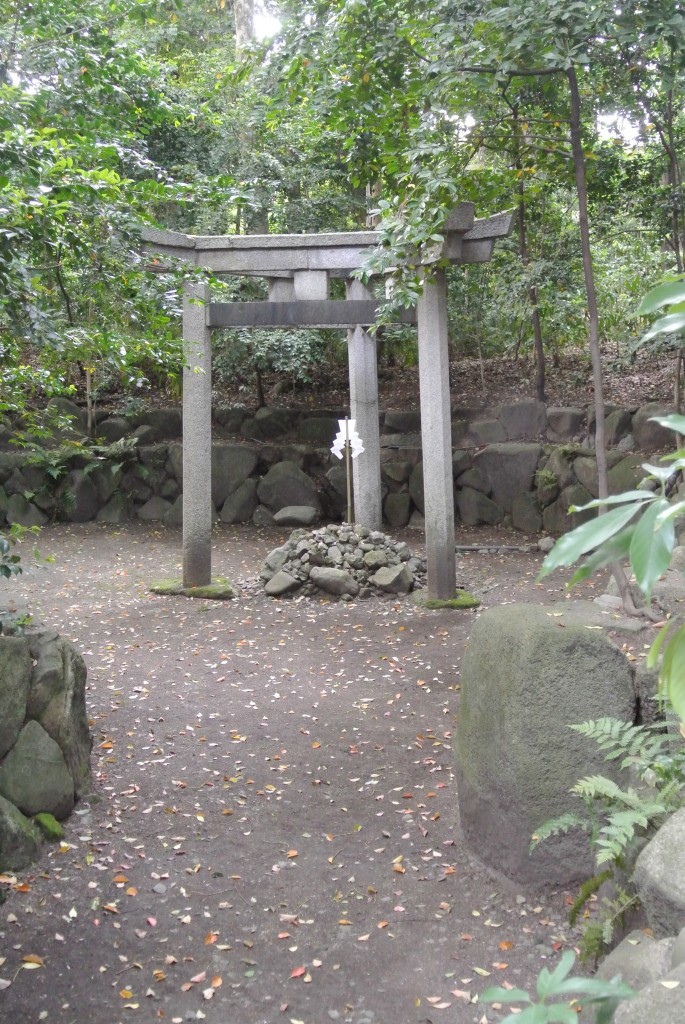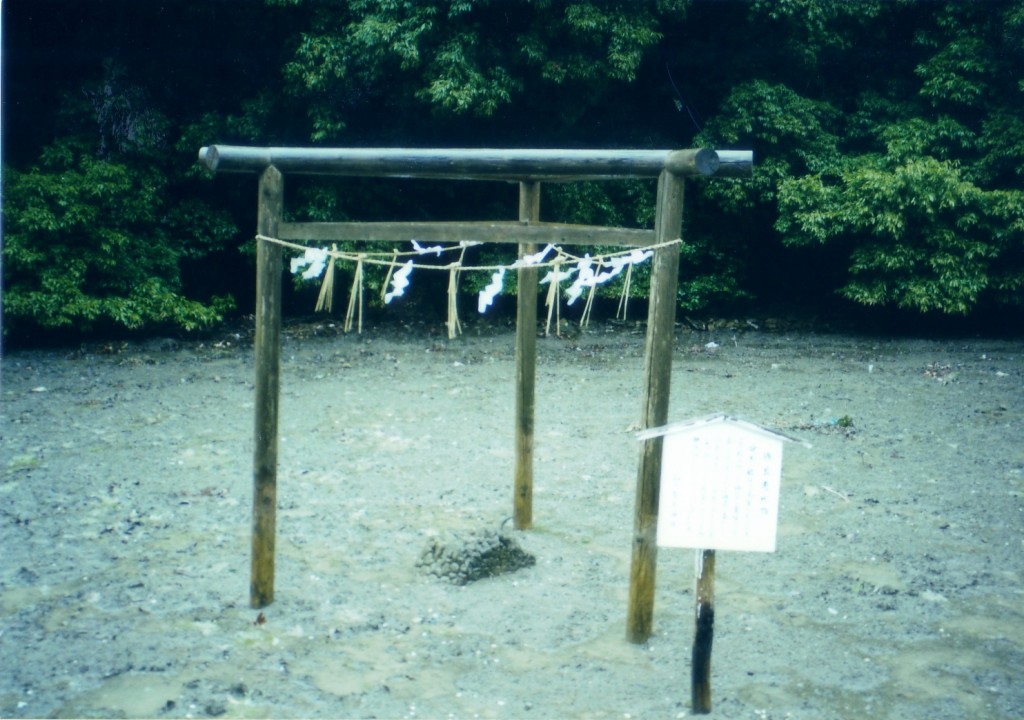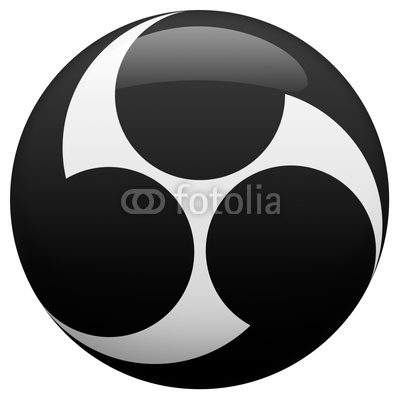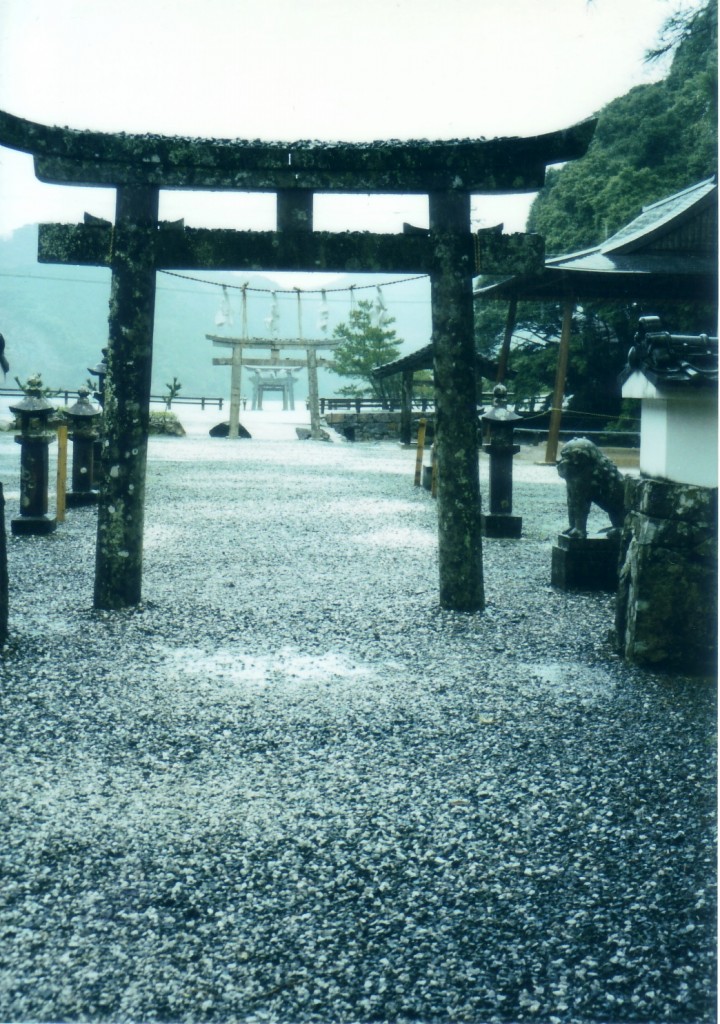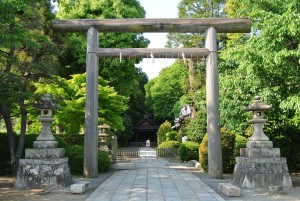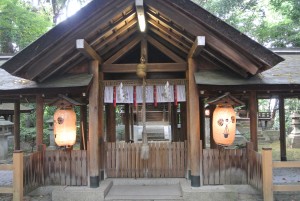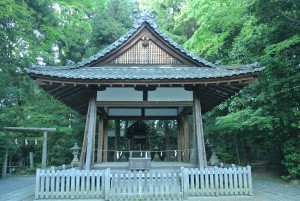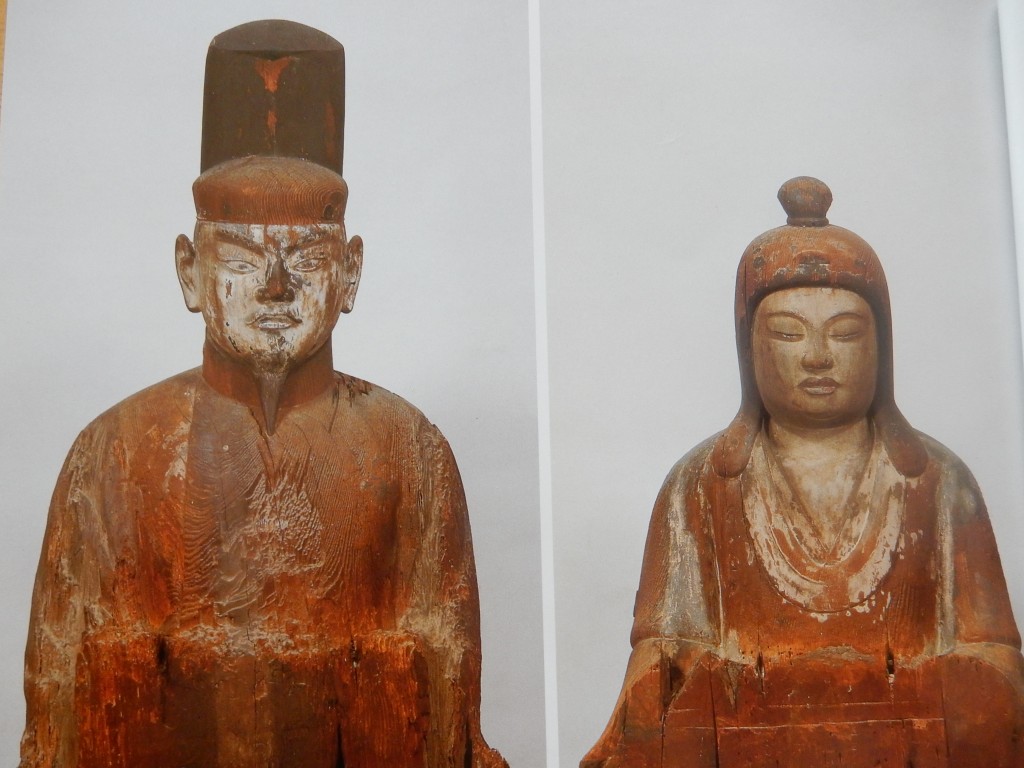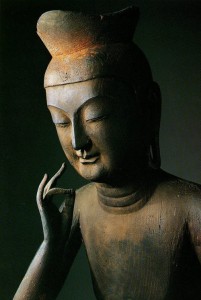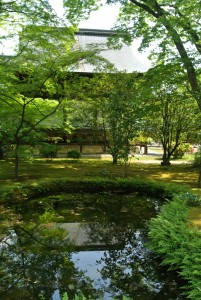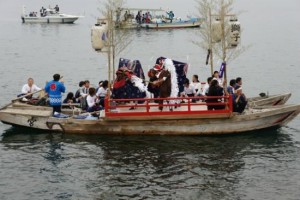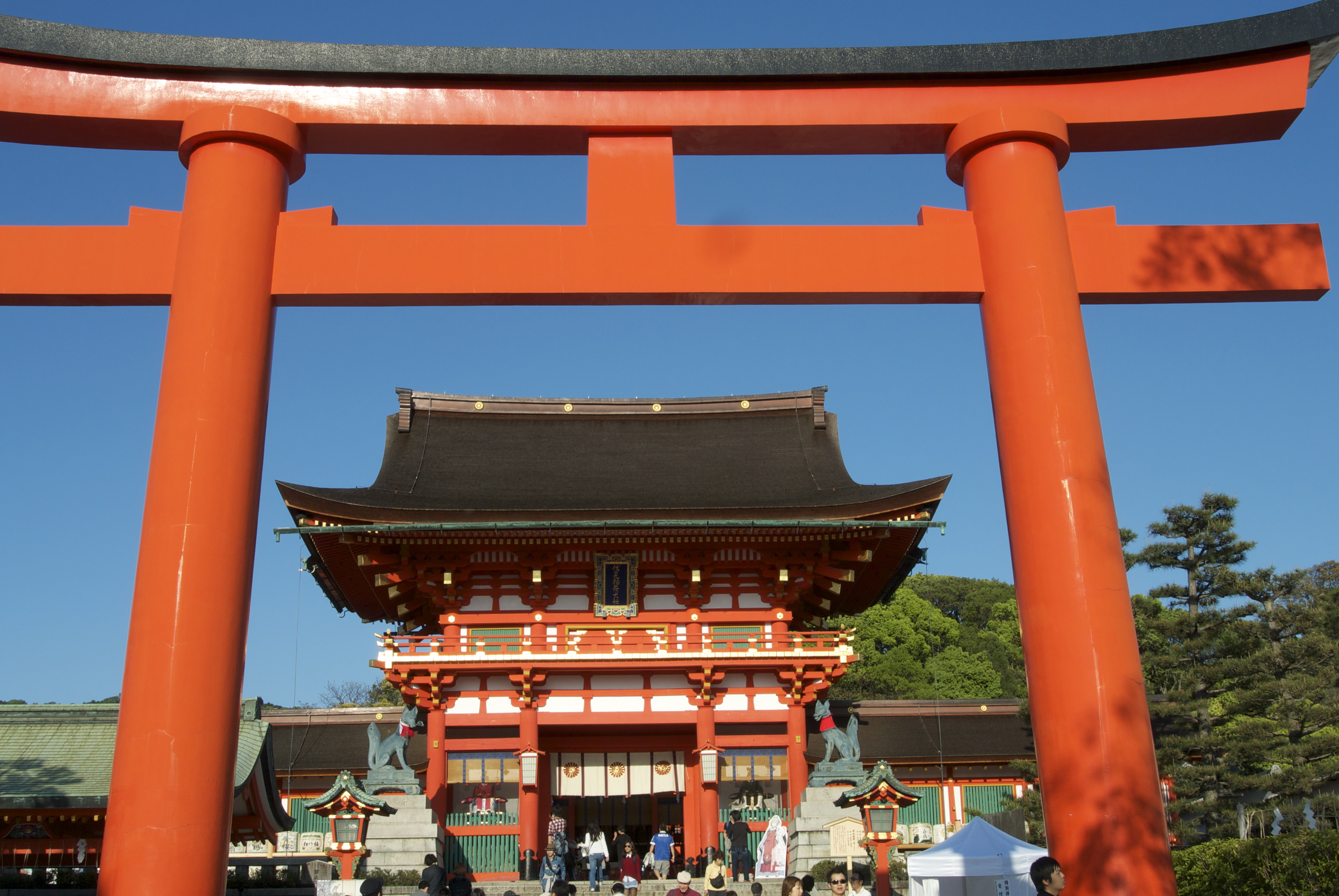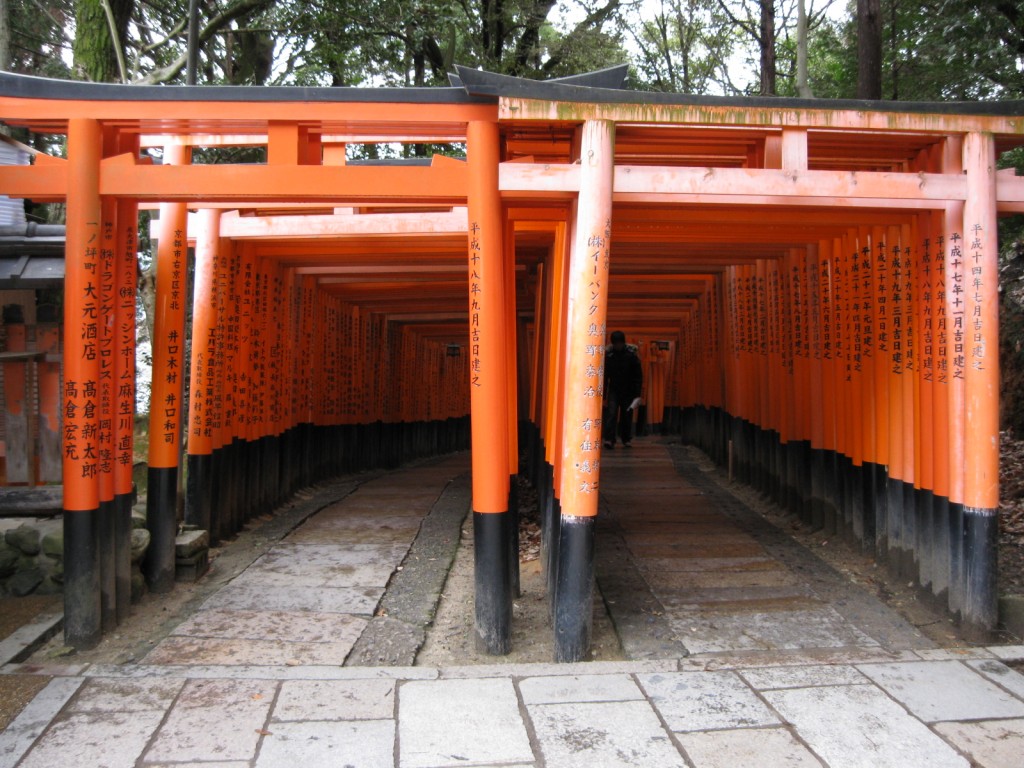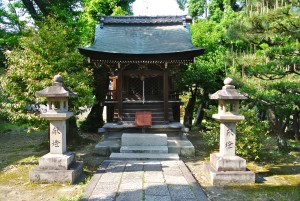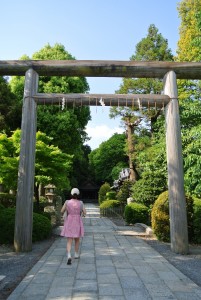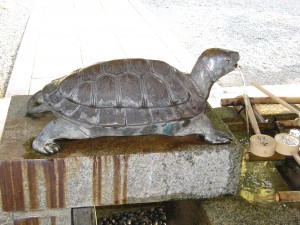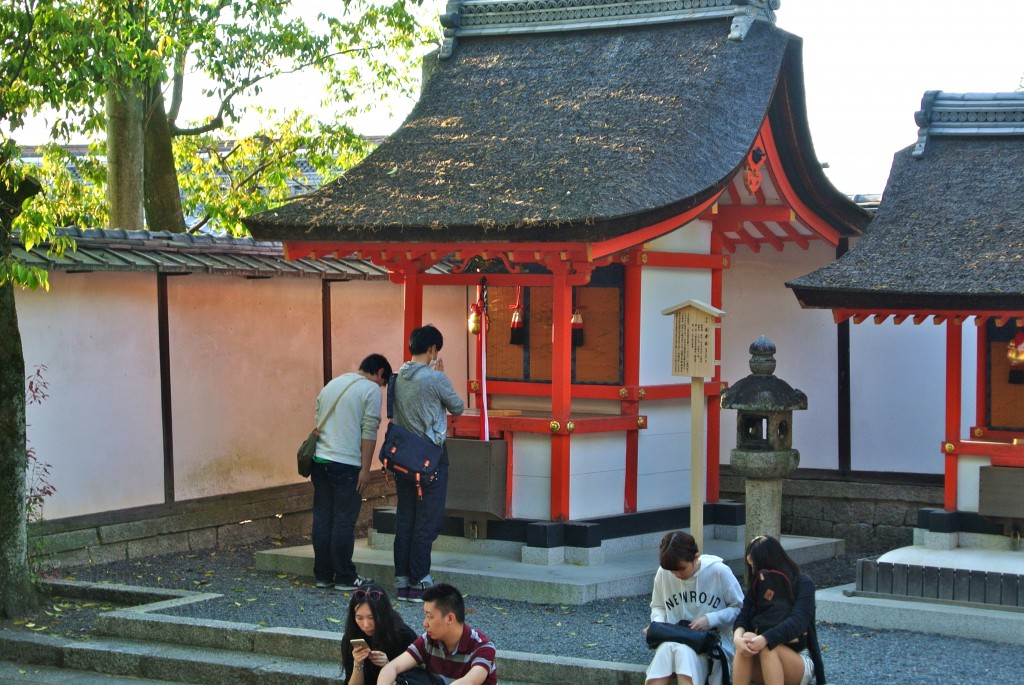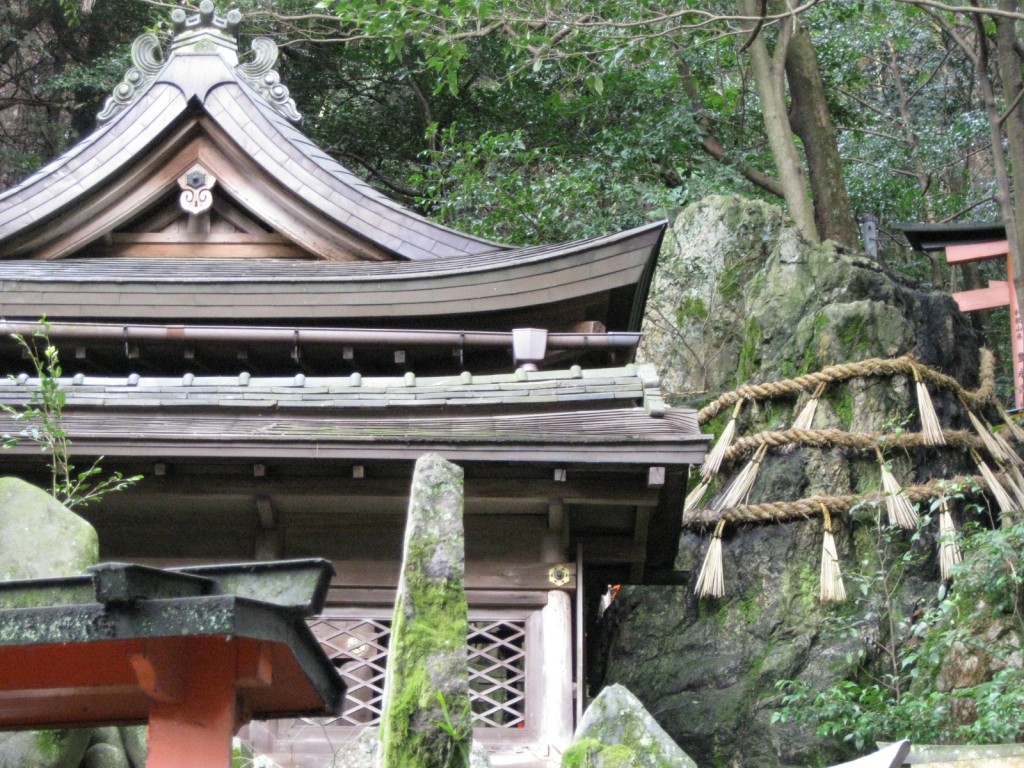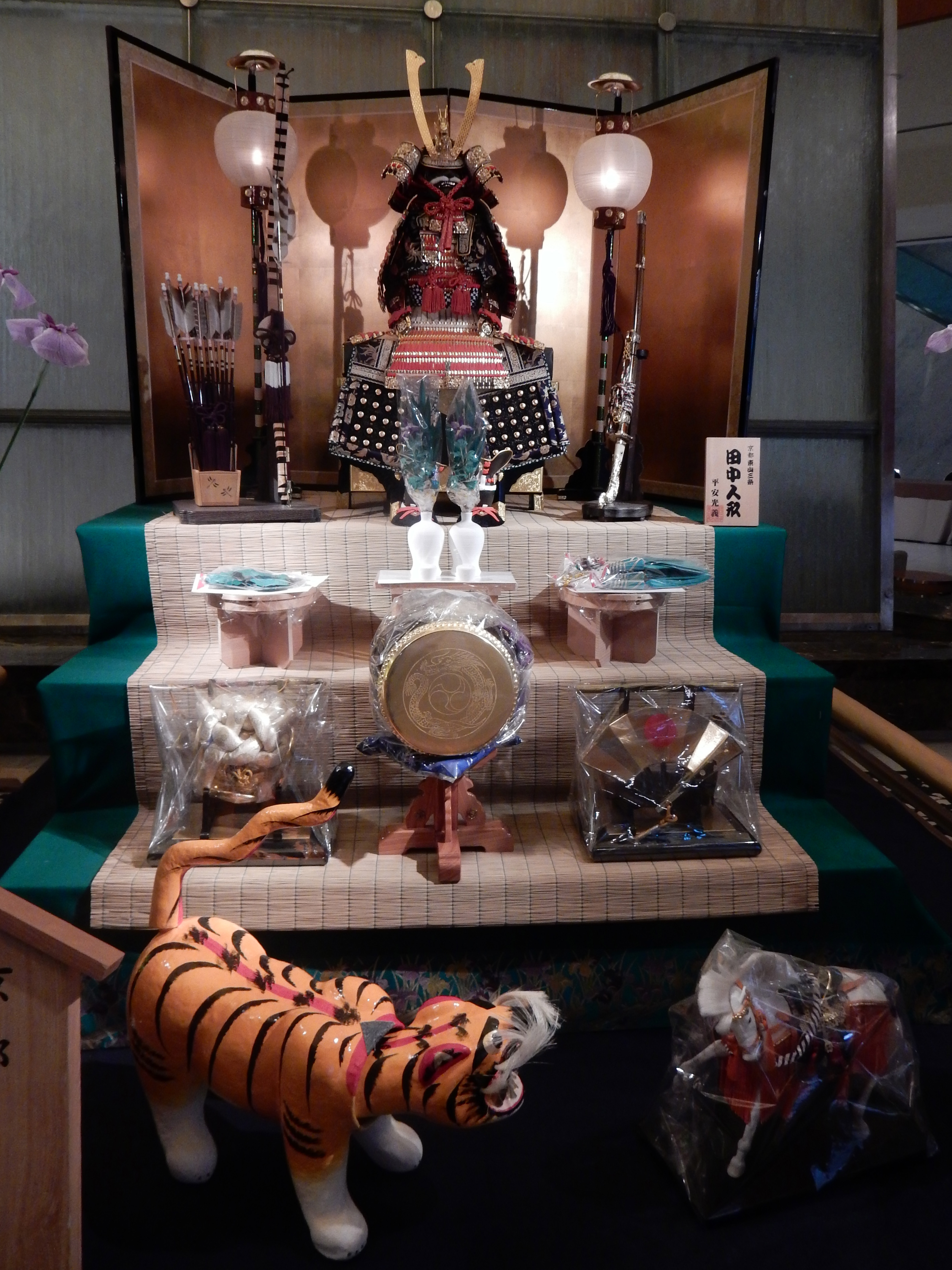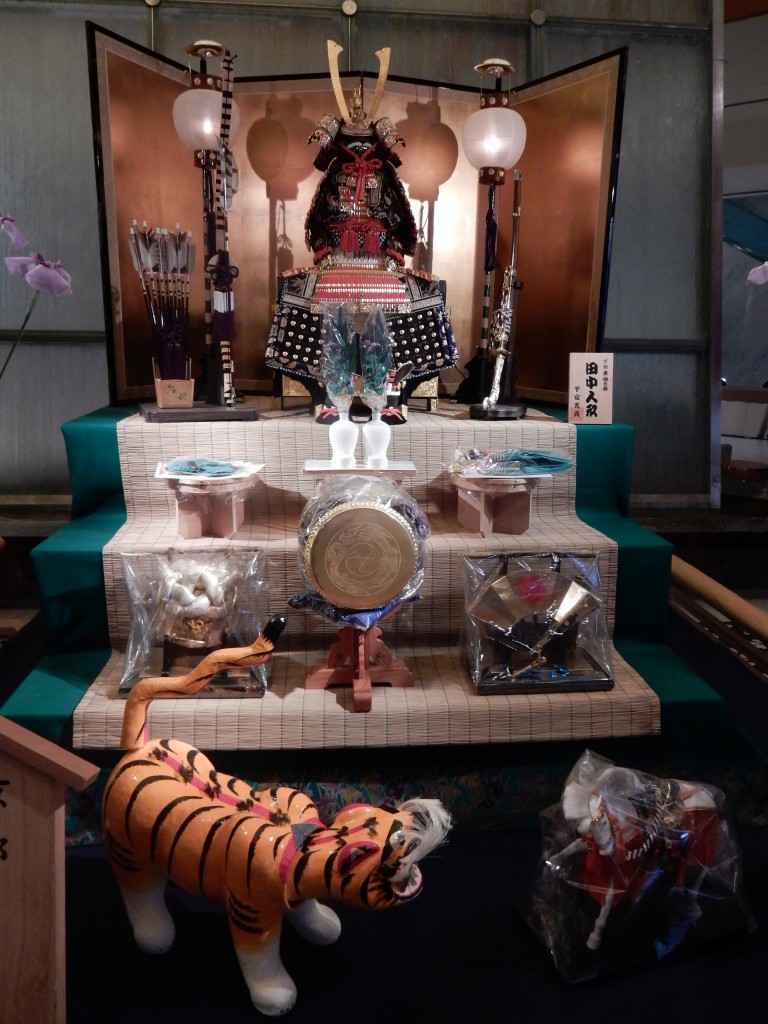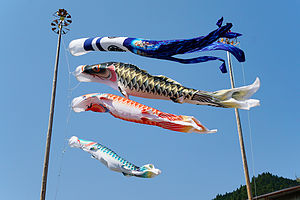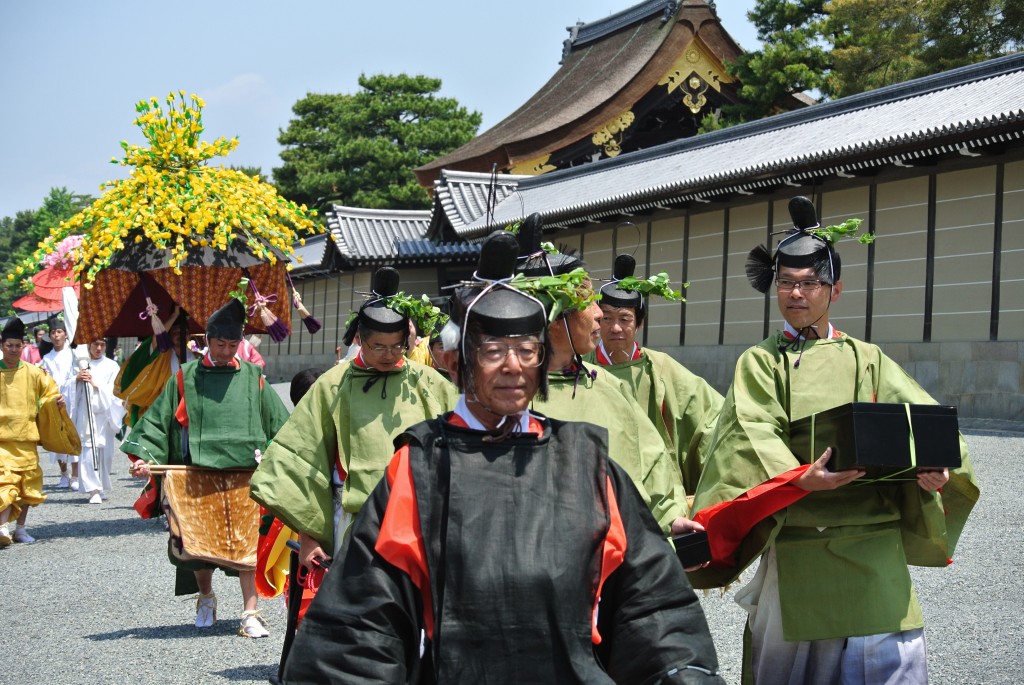
The procession begins at the Old Imperial Palace, and participants are dressed in Heian garb with a sprig of aoi or katsura leaves
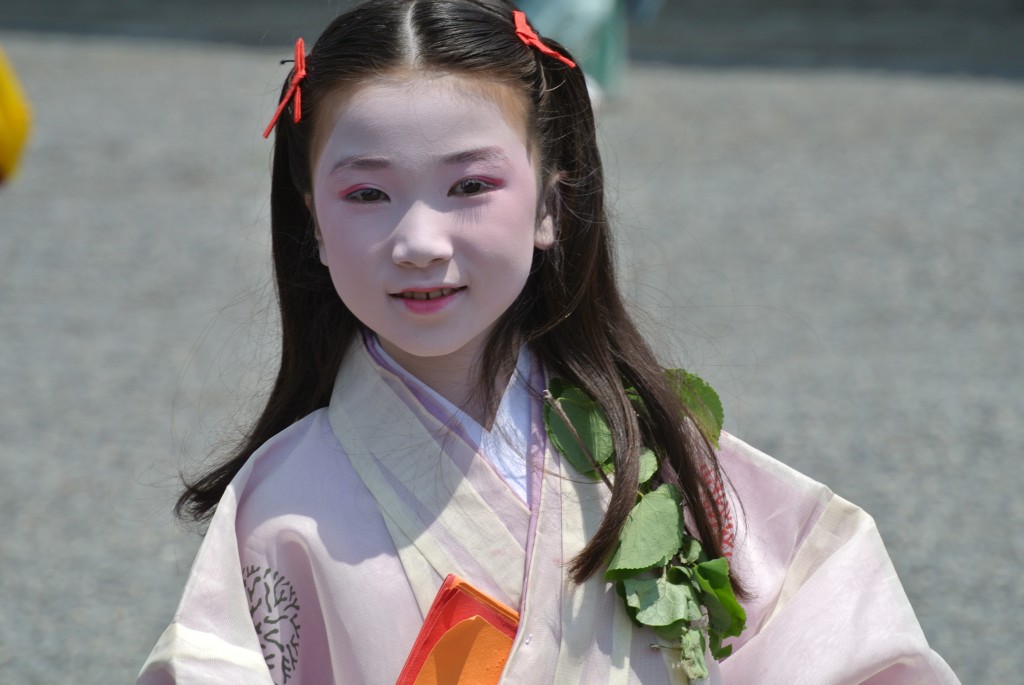
At the beginning there’s a palpable sense of excitement.
A reminder that tomorrow sees one of the Big Three Festivals in Kyoto (the others being the Gion Matsuri in July and the Jidai Matsuri in October). All the preliminary events have been done, such as the horse-riding and various purifications, and the way is clear for the grand procession in which the imperial messenger delivers greetings and offerings for the kami. (For the schedule, please see below.)
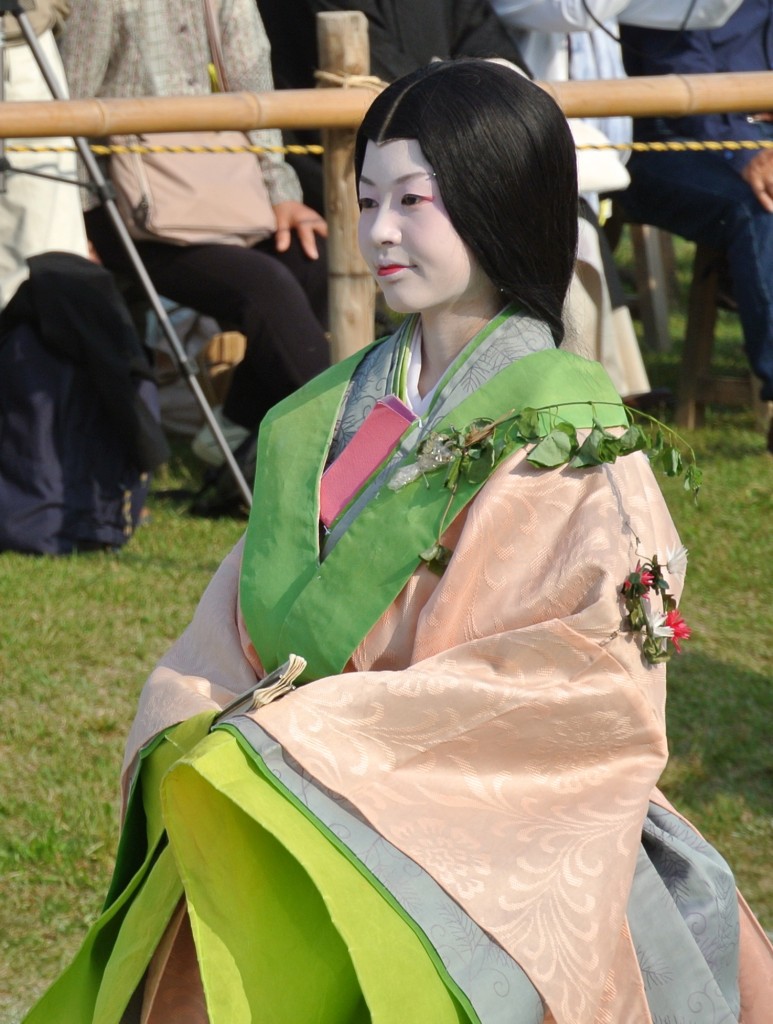
Women dressed in the style of court ladies add colour and elegance to the procession
The festival originated in the sixth century in a desire to please the kami and prevent disasters. Nowadays there are over 500 participants in Heian era costume; 36 horses; 2 ox-carriages. The procession starts off from the Former Imperial Palace around 10.30, and the stately progress means that it takes an hour to travel the short distance to Shimogamo Shrine.The procession stretches out to be half a mile long, and consists of horseback warriors, foot warriors, courtiers, lower-rank guards, higher-rank guards, halberd bearers and dignitaries. At Shimogamo dances are performed for the kami and the imperial messenger delivers gifts and greetings. Around 2.20 the procession sets off for Kamigamo Jinja where it arrives around 4.30 and rituals are again performed.
In medieval times there were two processions, one for the imperial messenger proceeding from the Imperial Palace and the other for the Saiin (an unmarried female related to the emperor appointed to the shrines). Between 810 and the early thirteenth century, when the practice fell into abeyance, there were 35 such priestesses who lived in palaces somewhere between the two Kamo shrines.
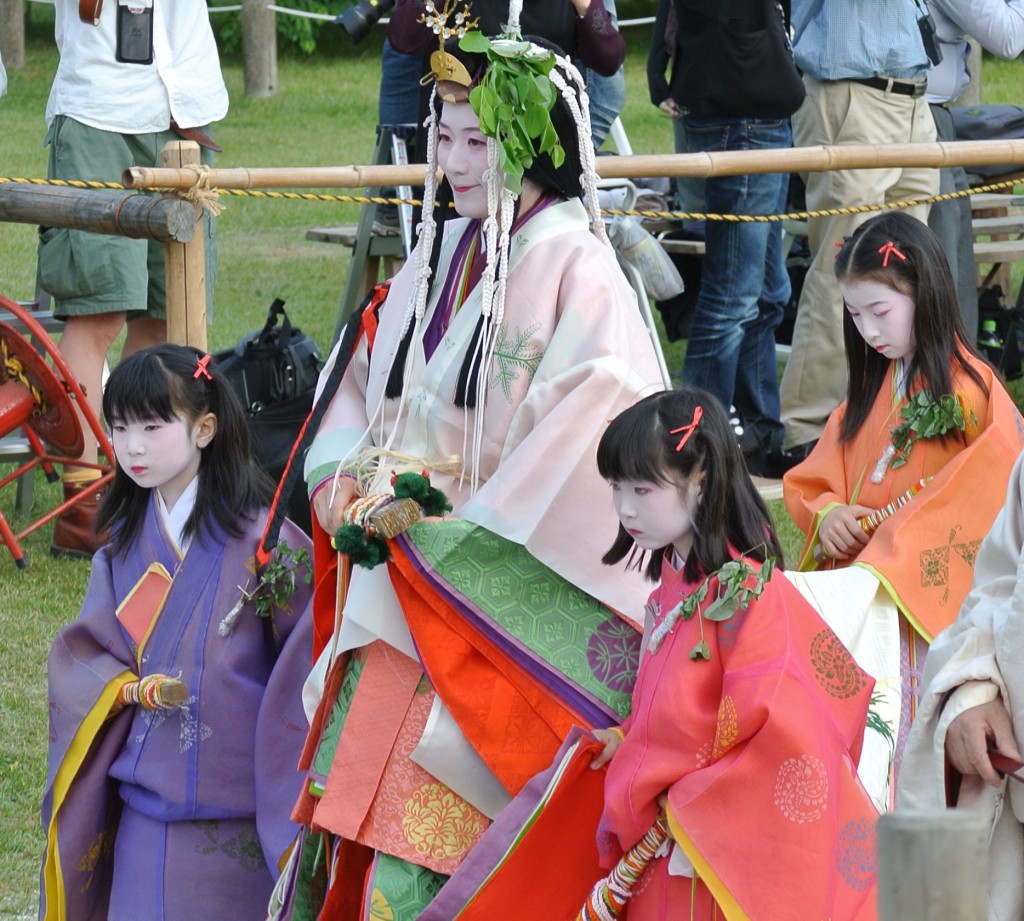
The Saiin inevitably is the star of the show, the May Queen of the whole event
The procession gets ready for departure in the grounds of the Former Imperial Palace. In former times the procession of the Saiin would meet up with that of the imperial messenger, and they would proceed together to the shrines. Nowadays everyone sets off from the south side of Gosho (Former Imperial Palace), and the role of the Saiin is taken by an unmarried young female from a well-bred local family, who is known as the Saio-dai. (For an interview with a former representative, click here.)
Unfortunately the weather forecast for tomorrow looks bad, with rain predicted. Depending on the weather conditions, a decision will be made tomorrow morning whether to postpone the parade for a day. After all, those junihitoe (twelve-layered ceremonial kimono) and other exquisite costumes are precious items, not intended by any means to serve as simple rain-gear.
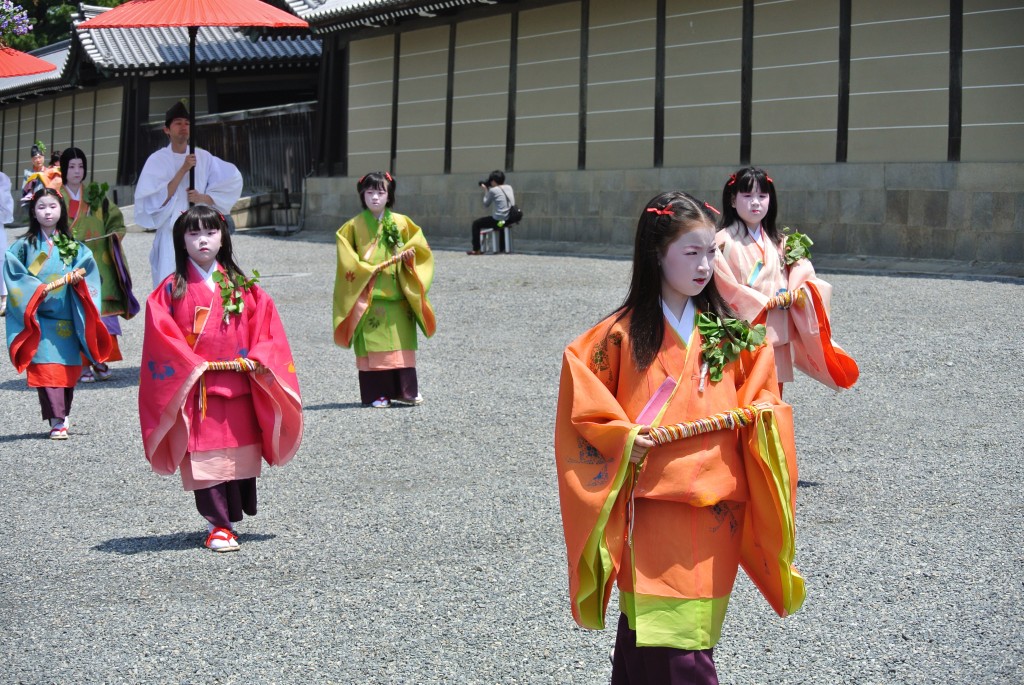
Even the children get to wear precious costumes, though on a hot day it can be an awfully long way to walk in such thick clothing
*********************************************
Kyoto: Aoi Matsuri
Hollyhock Festival of the shrines. This 1,400-year old festival features a magnificent pageant which colorfully reproduces the imperial procession that used to pay homage to these shrines in ancient days. The procession consists of the ox-drawn carriages, courtiers and court ladies clad in ancient court robes, and men holding flower-decorated umbrellas, all decorated with hollyhock leaf. If it rains, the festival will be postponed to the next day.
Schedule & Key events:
10:30 a.m.-11:40 a.m. Procession from Kyoto Imperial Palace to Shimogamo-jinja Shrine
2:20 p.m.-3:30 p.m. Procession from Shimogamo-jinja Shrine to Kamigamo-jinja Shrine
Festival information compiled in cooperation with the Tourist Information Center of the Japan National Tourist Organization. (03) 3201-3331). Open 9 a.m.-5 p.m. daily.
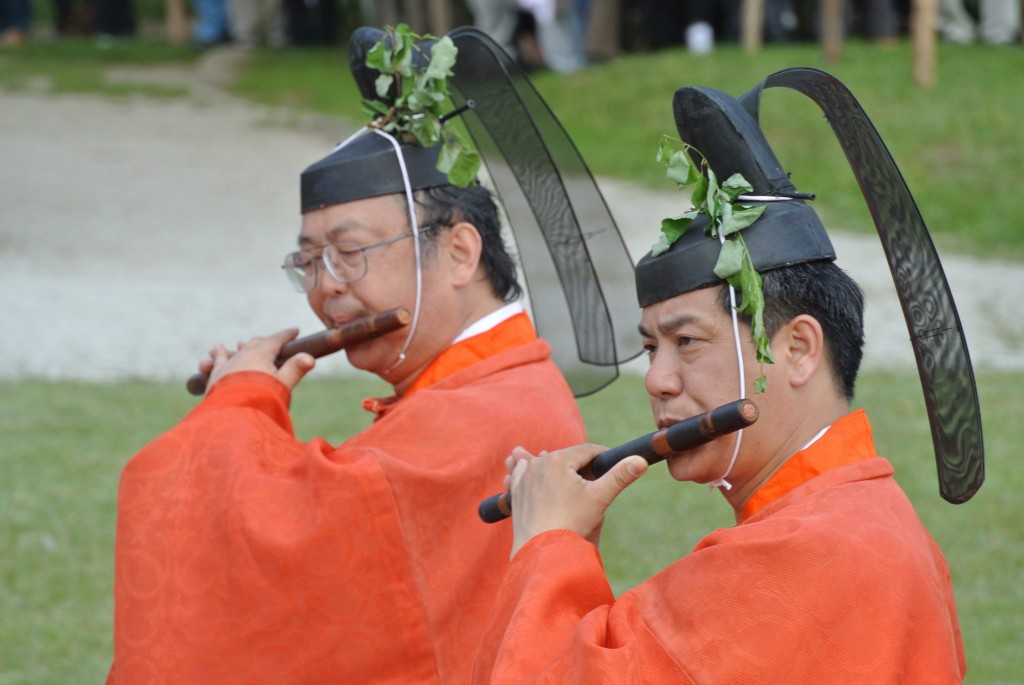
Strolling musicians accompany the procession…
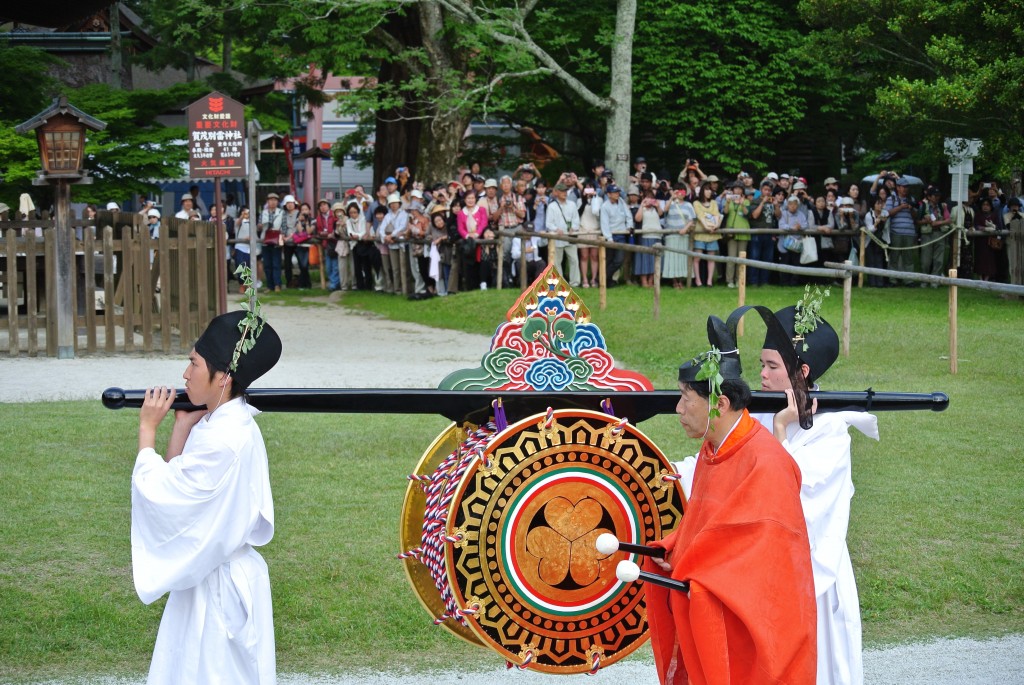
… and even the drum gets decorated with the trademark aoi emblem.
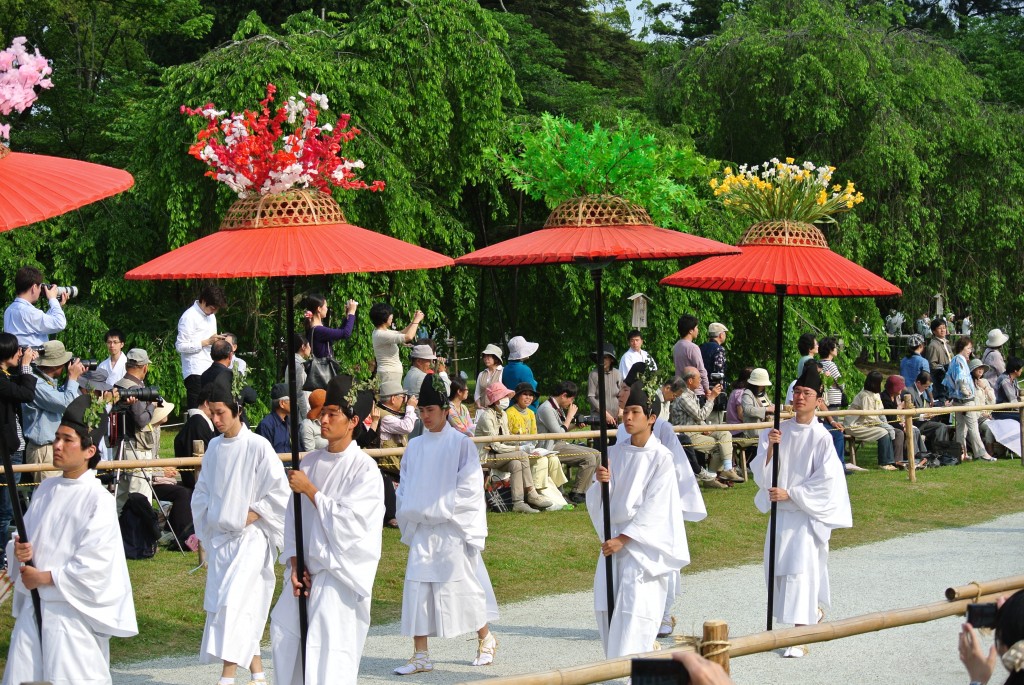
In the late afternoon the procession finally reaches Kamigamo Shrine…
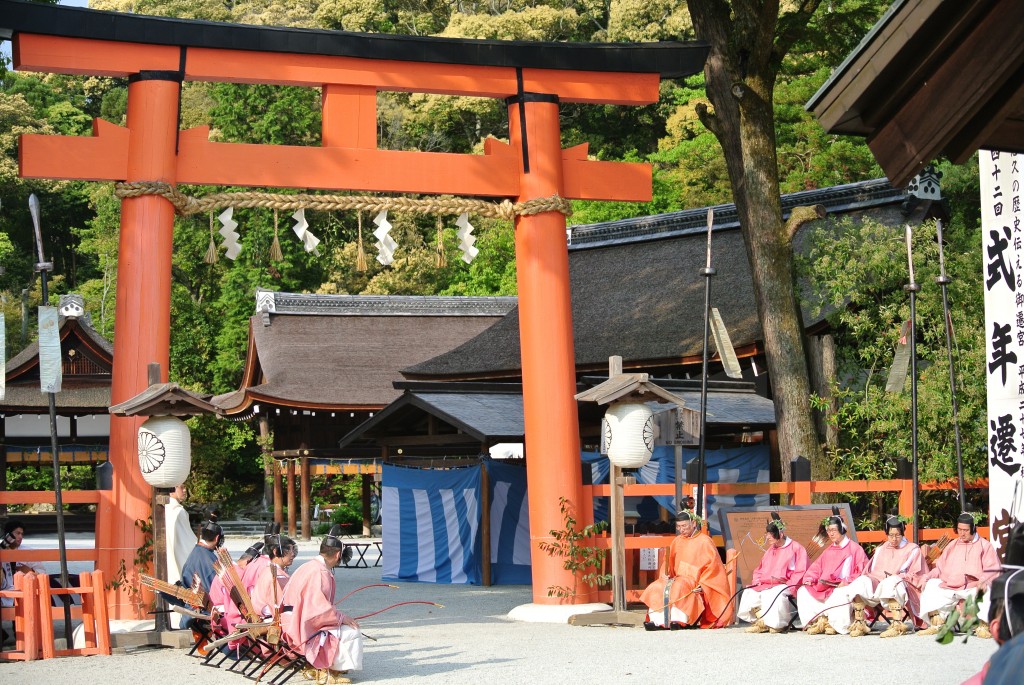
… where a reception party waits at the inner torii…
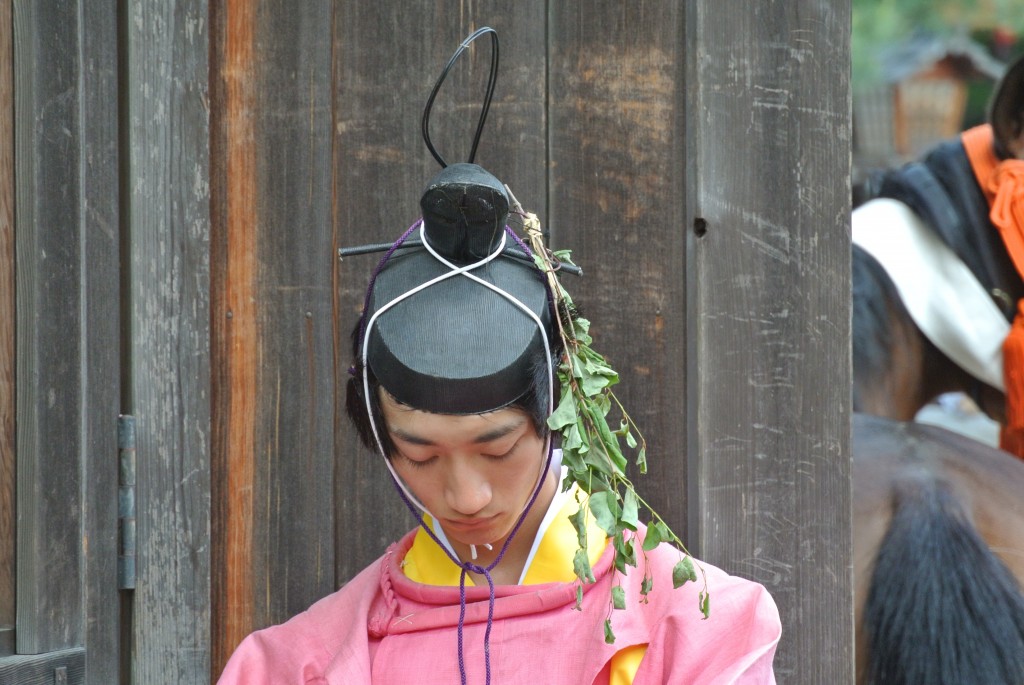
… though for some it’s been a long and exhausting day.


